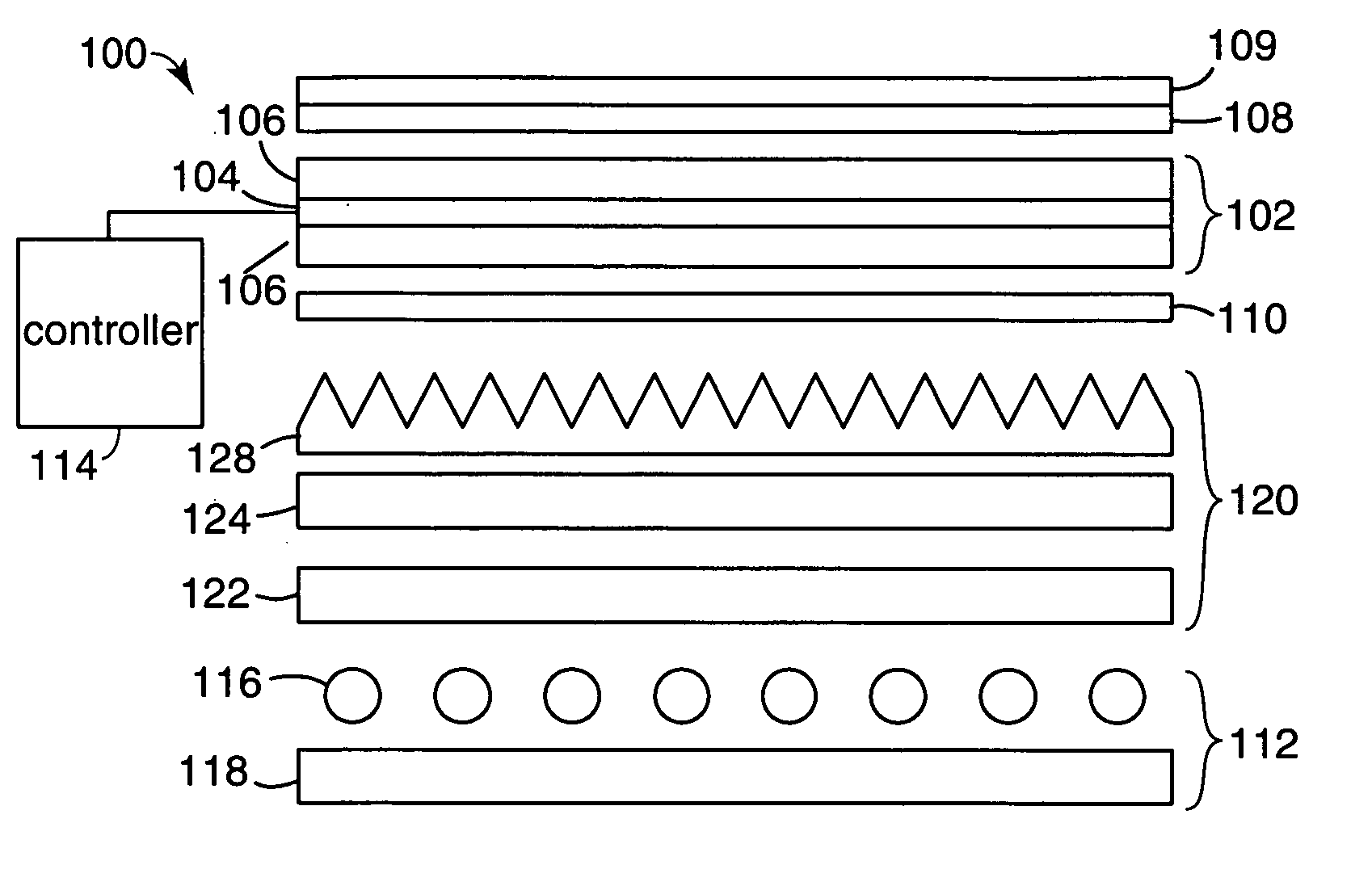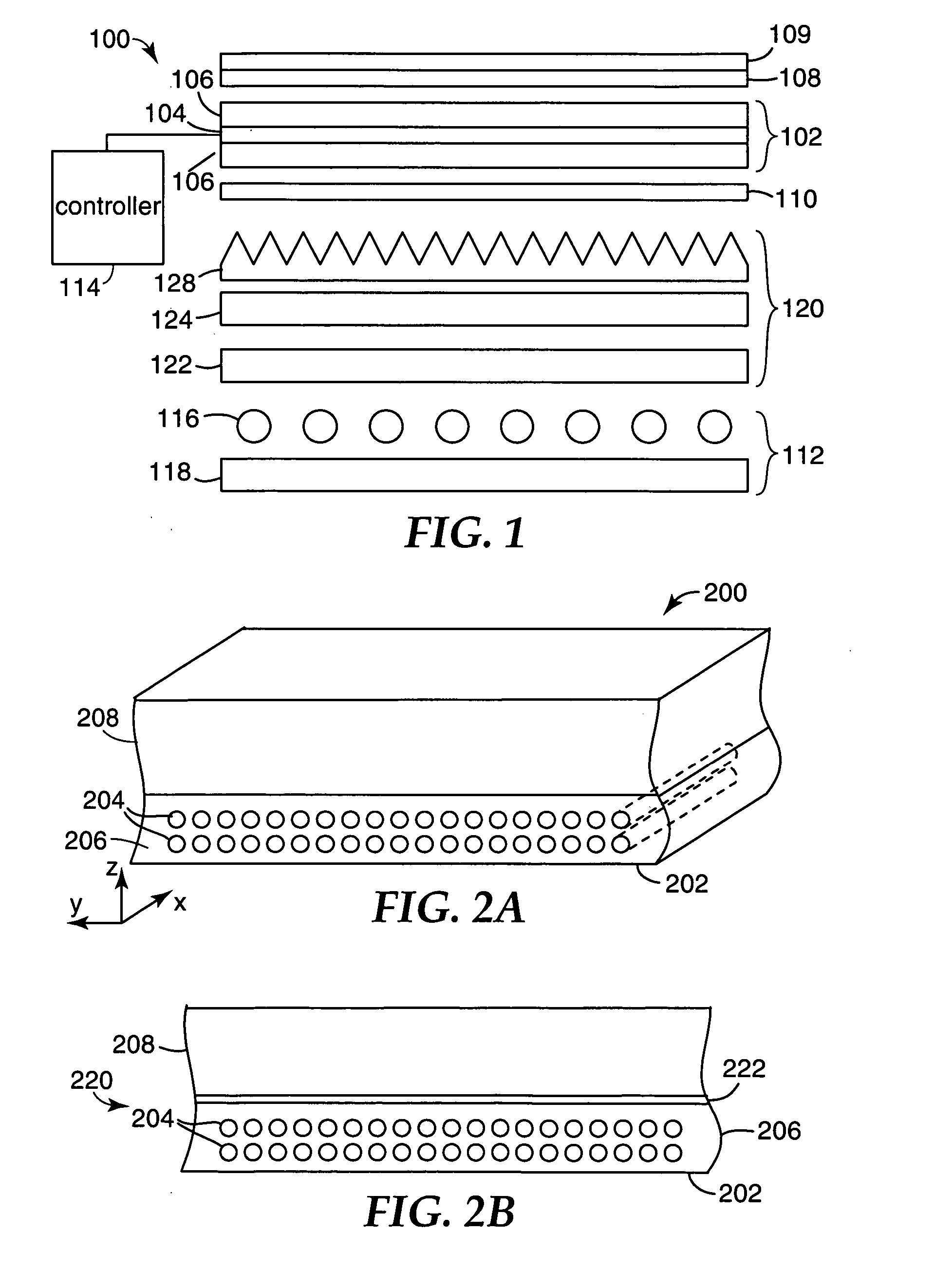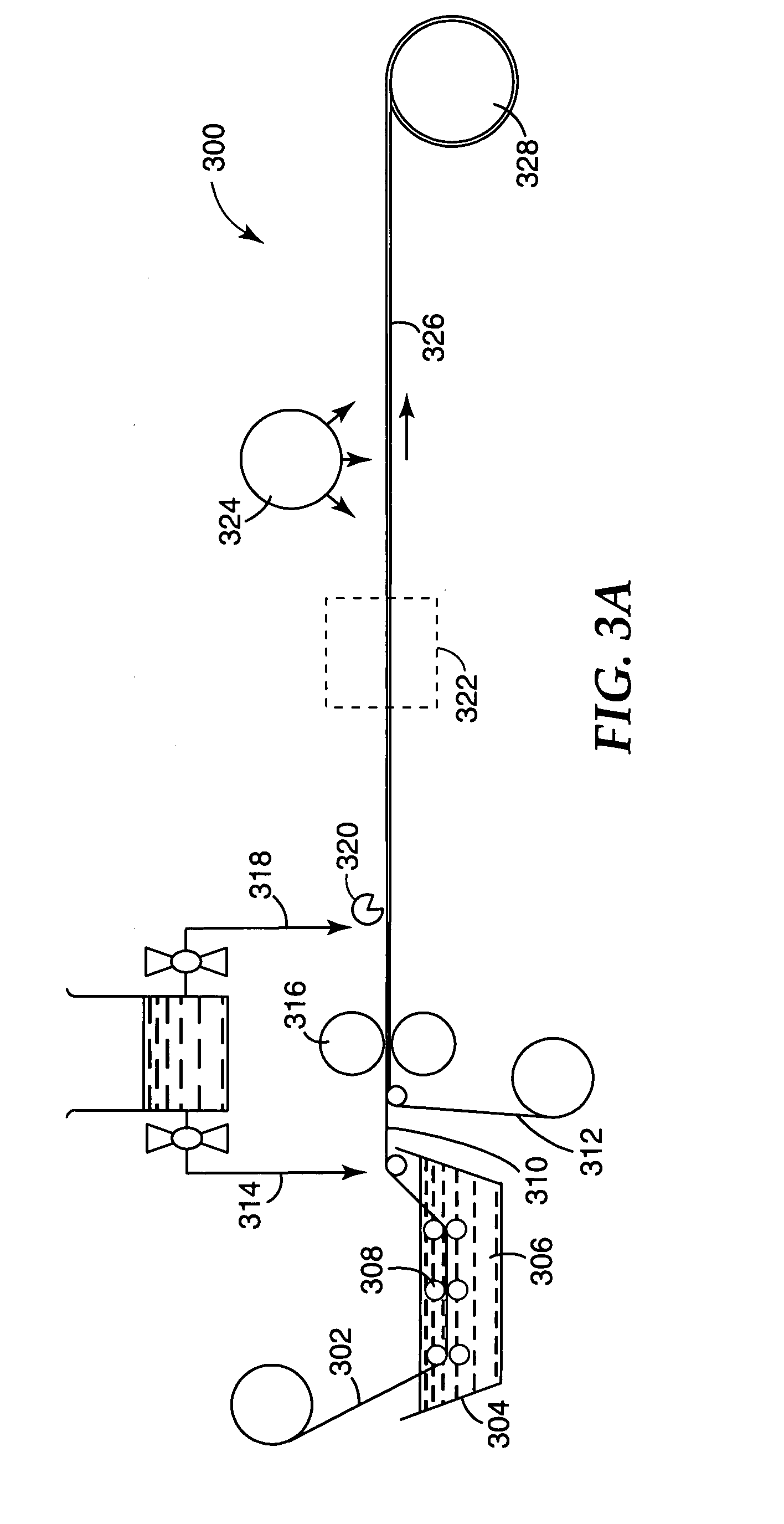Reinforced reflective polarizer films
a reflective polarizer and film technology, applied in the field of optical films, can solve the problems of increasing the amount of polarized light incident on the lcd panel, presenting challenges in manual assembly and handling processes, and it is impractical to simply change the thickness of the reflective polarizer without changing its optical or cosmetic characteristics
- Summary
- Abstract
- Description
- Claims
- Application Information
AI Technical Summary
Benefits of technology
Problems solved by technology
Method used
Image
Examples
example 1
DBEF Directly Attached to Composite Layer
[0125] In this example, a fiber reinforced layer was formed on a pre-existing layer of DBEF, a multilayer polymeric reflective polarizer manufactured by 3M Company. This polarizer is very similar to the commercially available polarizer sold by 3M Company as DBEF-P2, but has thinner skin layers. The fiber was fiber material A, listed in Table I. The resin mixture, Resin Mixture 1, was formed with the following weight % of the different resin components:
Resin ComponentWgt %C48.85D29.42E5.07F15.25G1.04
[0126] Resin Mixture 1 had a measured refractive index of 1.5470 or 1.5462, depending on the batch, after curing. In this example, four individual sheets of DBEF were primed and a layer of woven fiberglass and resin were applied to, degassed, and cured onto each side of each of the pieces of DBEF film. The primer was applied to improve the adhesion of the acrylate resin to the DBEF film. One primer is comprised of hexanediol diacrylate 97% (w / w...
example 2
DBEF Directly Attached to Composite Laver
[0134] Example 2 used fiber material A for reinforcement, but with a reactive silane-based CS767 finish on the glass fiber. This is a surface finish claimed by the manufacturer to improve adhesion of the glass fibers to epoxy, polyamide and cyanate ester resins. The resin mixture, Resin Mixture 3, was formed with the following weight % of the different resin components:
Resin ComponentWgt %C69.3H29.7G1.04
[0135] After curing, Resin Mixture 2 had a measured refractive index of 1.5517. A layer of woven fiber fabric glass and resin were applied to, degassed, and cured onto each side of a piece of primed DBEF film, as described above for Example 1.
[0136] A summary of the optical properties of the sample made in Example 2 are included in Table III, and the mechanical properties are summarized in Tables IV and V.
example 3
DRPF Directly Attached to Composite Laver
[0137] Example 3 was the same as Example 2 except that the reflective polarizer was a sheet of diffuse reflecting polarizer film, supplied by 3M Company, St. Paul, Minn., under the name DRPF. The optical properties of the Example 3 samples are summarized in Table III.
PUM
 Login to View More
Login to View More Abstract
Description
Claims
Application Information
 Login to View More
Login to View More - R&D
- Intellectual Property
- Life Sciences
- Materials
- Tech Scout
- Unparalleled Data Quality
- Higher Quality Content
- 60% Fewer Hallucinations
Browse by: Latest US Patents, China's latest patents, Technical Efficacy Thesaurus, Application Domain, Technology Topic, Popular Technical Reports.
© 2025 PatSnap. All rights reserved.Legal|Privacy policy|Modern Slavery Act Transparency Statement|Sitemap|About US| Contact US: help@patsnap.com



